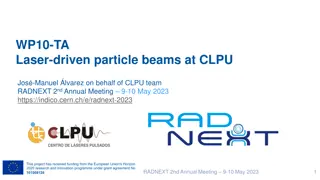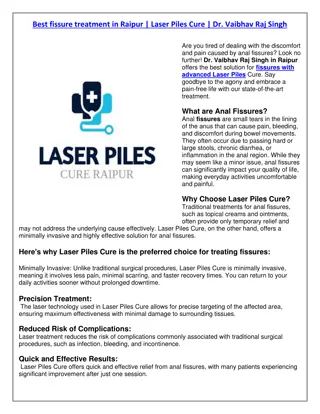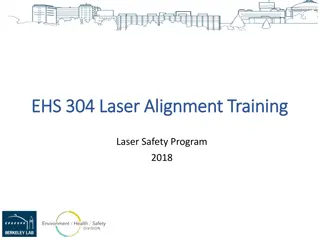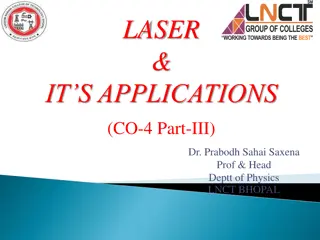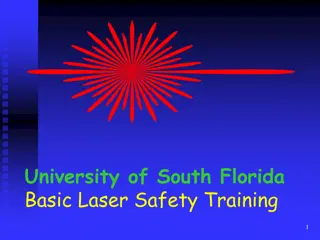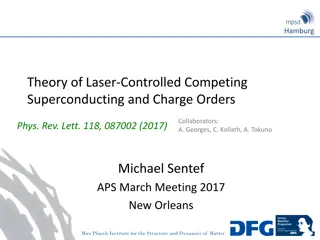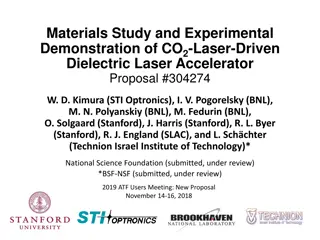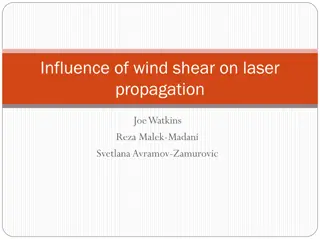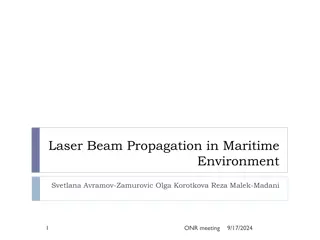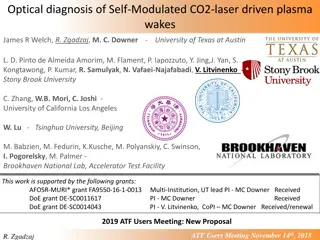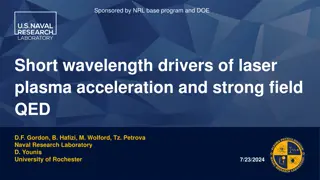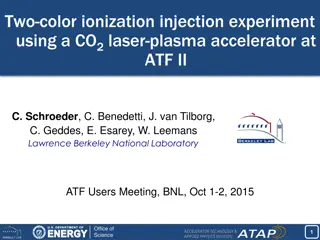
Understanding LASER Technology and Applications
Explore the fascinating world of LASER technology and its wide-ranging applications in modern society, from industry and medicine to law enforcement and entertainment. Learn about the principles of LASER emission, different types of LASERs, and their crucial roles in various fields. Discover how LASERs are used in communication, research, and commercial products, making a significant impact on our daily lives.
Download Presentation

Please find below an Image/Link to download the presentation.
The content on the website is provided AS IS for your information and personal use only. It may not be sold, licensed, or shared on other websites without obtaining consent from the author. If you encounter any issues during the download, it is possible that the publisher has removed the file from their server.
You are allowed to download the files provided on this website for personal or commercial use, subject to the condition that they are used lawfully. All files are the property of their respective owners.
The content on the website is provided AS IS for your information and personal use only. It may not be sold, licensed, or shared on other websites without obtaining consent from the author.
E N D
Presentation Transcript
LASER and Applications Assistant Teacher. Ali. M. khudair,
LASER Alaser is a device that emits light through a process of optical amplification based on the stimulated emission of electromagnetic radiation. LASER: light amplification by stimulated emission of radiation
Principle of Emission of Radiations Stimulated Emission.svg
Difference between Spontaneous and Stimulated Emission Spontaneous emission: Electron drops from an excited state to a lower state (no outside mechanism) - emitting a photon. Stimulated emission (lasers): Stimulated emission is the process by which an atomic electron (or an excited molecular state) interacting with an electromagnetic wave of a certain frequency may drop to a lower energy level, transferring its energy to that field. A new photon created in this manner has the same phase, frequency, polarization, and direction of travel as the photons of the incident wave. This is in contrast to spontaneous emission which occurs without regard to the ambient electromagnetic field.
Types of LASER Lasers are classified into 4 types based on the type of laser medium used: Solid-state laser Gas laser Liquid laser Semiconductor laser
Applications of LASER Thousands of highly varied applications in every section of modern society, including consumer electronics, information technology, science, medicine, industry, law enforcement, entertainment, and the military. The first use of lasers in the daily lives of the general population was the supermarket barcode scanner The compact disc player was the first laser-equipped device Communications: communication, Lasers are used for free-space optical including laser communication in space
Applications of LASER Industry: cutting, welding, material heat treatment, marking parts, non-contact measurement of parts. Military: marking targets, guiding munitions, missile defense, electro- optical counter measures (EOCM), lidar, blinding troops. Law enforcement: LIDAR traffic enforcement. Lasers are used for latent fingerprint detection in the forensic identification field[64][65] Research: spectroscopy, scattering, laser interferometry, lidar, laser capture microdissection, fluorescence microscopy, metrology. laser ablation, laser annealing, laser Commercial thermometers, laser pointers, holograms, bubblegrams. products: laser printers, barcode scanners, Entertainment: optical discs, laser lighting displays
References Gould, R. Gordon (1959). "The LASER, Light Amplification by Stimulated Emission of Radiation". In Franken, P.A.; Sands R.H. (Eds.). The Ann Arbor Conference on Optical Pumping, the University of Michigan, 15 June through 18 June 1959. p. 128. OCLC 02460155. "laser". Reference.com. Retrieved May 15, 2008. "Four Lasers Over Paranal". www.eso.org. European Southern Observatory. Retrieved 9 May 2016. Conceptual physics, Paul Hewitt, 2002 "Schawlow and Townes invent the laser". Lucent Technologies. 1998. Archived from the original on October 17, 2006. Retrieved October 24, 2006. Chu, Steven; Townes, Charles (2003). "Arthur Schawlow". In Edward P. Lazear (ed.),. Biographical Memoirs. vol. 83. National Academy of Sciences. p. 202. ISBN 0-309-08699-X. "lase". Dictionary.reference.com. Retrieved December 10, 2011.

